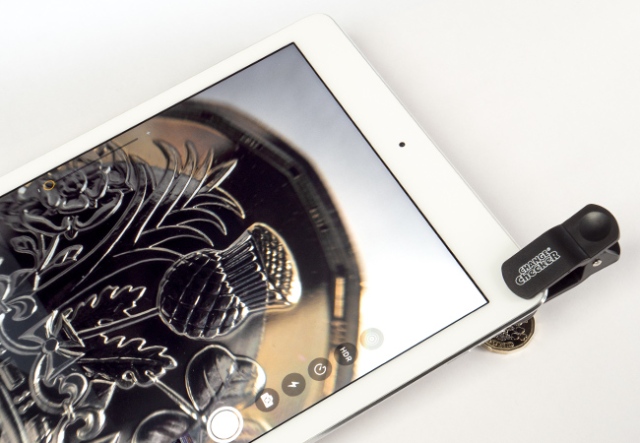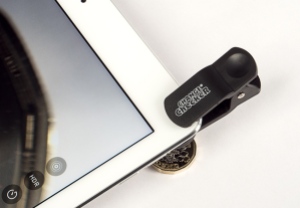Why the latest Royal Mint “error” is the hardest to find yet. Plus what it might be worth…
In 2017, following reports by Change Checker and in the national press that a die mix up at The Royal Mint resulted in a number of 12 sided £1 coins being struck with dual-dates, The Royal Mint officially confirmed the error.
However, this is one of the hardest errors ever to spot. That’s because even with 20/20 eyesight you will struggle to see the incorrect date on the coin’s reverse because it’s micro-engraved as part of the coin’s ultra-secure finish.

The error is so small, it cannot be seen with the naked eye.
What do I need to look for?
Firstly, although both 2016 and 2017 obverse-dated £1 coins entered circulation in April 2017, the die-error mix up appears to have only occurred on a limited number of coins with a 2016 date on the Queen’s head side.
So it’s worth checking any 2016 coins. You’ll need to look just inside the rim of the design-side of the coin, where you will see some tiny writing. You’ll almost certainly need a Microscope or Phonescope to properly see the writing, which should reveal the date.
You’re looking for a 2016 obverse-dated coin with 2017 micro-engraving on the reverse.
What if I can’t read the micro-engraving?
With over 1.5 billion new £1 coins being struck not all coins are finished perfectly. Unfortunately, a poorly struck example where you cannot read the micro-engraving is not of great interest to collectors.
What about other £1 mis-strikes and errors?
We believe this is the only known £1 error. Due to the huge number of coins that have entered circulation, there are a number of interesting mis-strikes, which, although numismatically interesting, have relatively limited collectibility or value.
More worryingly, there are a number of altered £1 coins for sale, claiming to have misaligned heads or similar unusual errors. However, both these are likely to have transgressed the Coinage Act by tampering with the coin and are clear minting impossibilities. STEER WELL CLEAR is our advice. Similarly beware of photographs that purport to show a genuine Dual-dated £1 coin – you need to be confident you’re not simply looking at two different coins.
So what is the Dual-dated £1 Coin worth?
This remains the most difficult question but let’s take a look at the available information.
- How many were struck?
The Royal Mint has given no indication of how many Dual-dated £1 Coins ever went into circulation – and it’s quite likely they do not even know. We have not seen any examples amongst our stock. Equally, 1,500,000,000 2016 £1 coins were struck and rates of 1,800 coins per minute were achieved at the height of production.
The key number seems to be how many coins The Royal Mint strike before they replace a die. Given the nature of the “error” it seems likely that it was only corrected when the die was replaced. Understandably, the number of coins The Royal Mint strikes with each blank is not something the Mint chooses to share for commercial reasons.
- What are the comparables?
The key to any valuation is what comparable coins sell for. The most obvious comparable is the 2008 undated 20p, which was caused by a similar die mix up. That sells online for between £50 and £80.
Other interesting UK errors include “Silver” 2p coins, which have sold in recent years for as much as £1,400 but these are considerably rarer relying on a few old 10p blanks being left over when a blank barrel has been filled with new 2p blanks. Another 2 pence error, when some DATE 2p pieces were struck using the old decimalisation dies with the word “NEW” in front of “PENCE”, currently sells for around £60.

The 2015 Rare ‘Silver’ 2p
- So what is the new Dual-dated £1 Coin worth?
We understand that at least one example was sold for £2,500 to a buyer in Spain in 2017, which probably marks the likely ceiling for value.
Probably more Dual-dated £1 coins have been struck than the 2p coins. However, the error is particularly difficult to spot due to the size of the micro-engraving. It’s also worth noting that interest in £1 coins is still very high and, of course, because they are relatively new in circulation, the chances of finding an all-important good quality version is high.
Bearing all that in mind, our best value estimate for a Dual-dated £1 Coin in excellent condition is currently £300 – £500.
Finding the coin in your change
We’ve heard from two Change Checkers lucky enough to find a dual dated error, one in October 2018 and one in April 2019.
I’m sure that the challenge of finding a dual dated £1 coin has sparked many Change Checker’s interest in collecting coins and I’m sure will encourage more collectors out there to look more closely at their £1 coins.

Dual dated £1 error coin found by a lucky Change Checker
If you’ve come across an interesting coin in your change, be sure to get in touch with us. We’d love to hear about the rare coins you’ve found.
Help find the Dual-dated £1 Coin with the Change Checker Phonescope
The Phonescope works by clipping onto a mobile device, and magnifying the camera, allowing you to take incredible close-up photos and videos.



You say that the only reported error are to do with the date?
But floors with the dies happen die to fractures and wear.
I have multiple examples of 1/2/5/10/20/50 £1 and £2 error coins of various grades that are straight from the the banks change draws.
And the amount of new error coins I find is ridiculous considering the mints strict error preventing systems?
Hi i have today received a 2017 new £1 coin that has a blue hue on the reverse side outer gold rim the edge and front are gold though dull look normal as dose the lettering and raised pattern the silver also on both sides is normal has anyone else seen this before?
Reblogged this on charlesobrien08 and commented:
Worth you all checking your new 2016 £ coins you will need a very strong magnifying glass or a microscope.
It would appear that the B of E is sending out these coins on purpose.
If you strike a 2016 coin, you use a 2016 outer stamp.
In December 2016 all coins dated so would be correct.
Then the dies would be taken off and the 2017 date with the smaller 2017 would be fixed to the machine.
You would not expect only one die to be changed.
If they still had 2016 coins then they would have continued to stamp them with both the large and small die then once they were all gone replace the 2 date dies.
IT’S NOT ROCKET SCIENCE.
IT’S ALL SO BLOODY STUPID.
PEOPLE SHOULD BE SACKED
Hi Luke,
Could you explain why some 2 pound coins loose the definition of the dots on the inner part of the coin part or the way round. I have a 2013 guinea coin with it missing about a third of the dots. Are these mis strikes or fakes?
It’s hard to say.
Perhaps some of your coins had the wrong die on when stamped
Hi Roger, without seeing the coin I cannot say for certain. I have seen many examples of mis-struck coins where the alignment is slightly off. This is actually quite common simply due to the vast quantities of coins that The Royal Mint produce. These are interesting to collectors but not really worth much more than face value. I hope this help- Luke
I have noticed coins in 2015 have different Queens head on them can u tell me any thing about this
Hi David, yes – this is because a new portrait of the queen, designed by Jody Clark, was introduced in 2015. I hope this helps- Luke